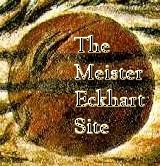|
|
||
 |
Meister Eckhart Home / Works by Meister Eckhart - Quotes / Inspired by Eckhart / Studies / The Papal Condemnation / Mail & Announcements / Links / Books |
M. LAISTNER
Knowledge of Greek in Western Europe during the earlier Middle Ages
Chapter 10 (The Study of Greek) of Laistner's, Thought & Letters in Western Europe - A.D. 500 to 900, N.Y. 1931, pp. 238-250
Page 7
In the West, moreover, a curious complication was introduced by the identification at the beginning of the ninth century of the Parisian martyr Dionysius (St Denys) with the pseudo-Areopagite. For giving not merely currency but authority to this ingenious, if glaring, fiction, abbot Hilduin and the monks of St Denis were apparently responsible.[17] The first record in the West of the Greek original of the pseudo-Dionysius is found in a letter sent by Pope Paul I to Pippin in 758, together with a manuscript of the treatises. In 827 the Byzantine emperor Michael, amongst other valuable gifts which he sent by an embassy to Louis the Pious, included a fine uncial codex of the pseudoDionysius. This manuscript survives and is now in the National Library in Paris (MS gr. 437). From it not later than 835 a Latin version was made under the direction of Hilduin. Since the Greek original was written in uncials, the words were not separated and there are few accents, with the result that errors in reading could easily be made. The translation was a work of collaboration between two or three persons; for some of the mistakes made can only be explained on the assumption that one monk would read the Greek text aloud, and that the translator and copyist occasionally misunderstood what they had heard. This earliest Latin version of the Corpus Dionysiacum is preserved in several extant manuscripts and was used by Hincmar and Paschasius Radbertus.[18] It was, however, extremely literal and clumsy, and so a generation later John Scotus was commissioned by Charles the Bald to undertake a fresh translation. It included both the letters and the four treatises and seems to have been completed not later than 862. A comparison of the two versions makes it certain that John had before him not only the Greek manuscript but Hilduin's translation, though he does not refer to his predecessor. This silence, though it may conflict with modern notions about literary property, need occasion no surprise. The medieval scholar thought differently on this subject and it is the exception rather than the rule for him to indicate his sources, unless he is merely assembling a collectaneum of passages on a given topic from his predecessors. John's translation was then basically a revision, but it was thorough and he had the Greek original constantly before him. Although he too occasionally lapsed into error, his translation is a far more accurate presentation of the pseudo-Dionysius and at the same time it is more intelligible because expressed in better Latin. For some mistakes John cannot rightly be blamed. It happens that the Greek manuscript used by him and Hilduin is extremely faulty and also shows some lacunae, so that some mistranslations are due to errors in the original text. A further consequence is that, as John's version not only superseded Hilduin's, but was for several centuries the source from which the West derived its knowledge of the pseudo-Dionysius, Western scholars were misled on some aspects of Dionysiac theology until the thirteenth century.[19]